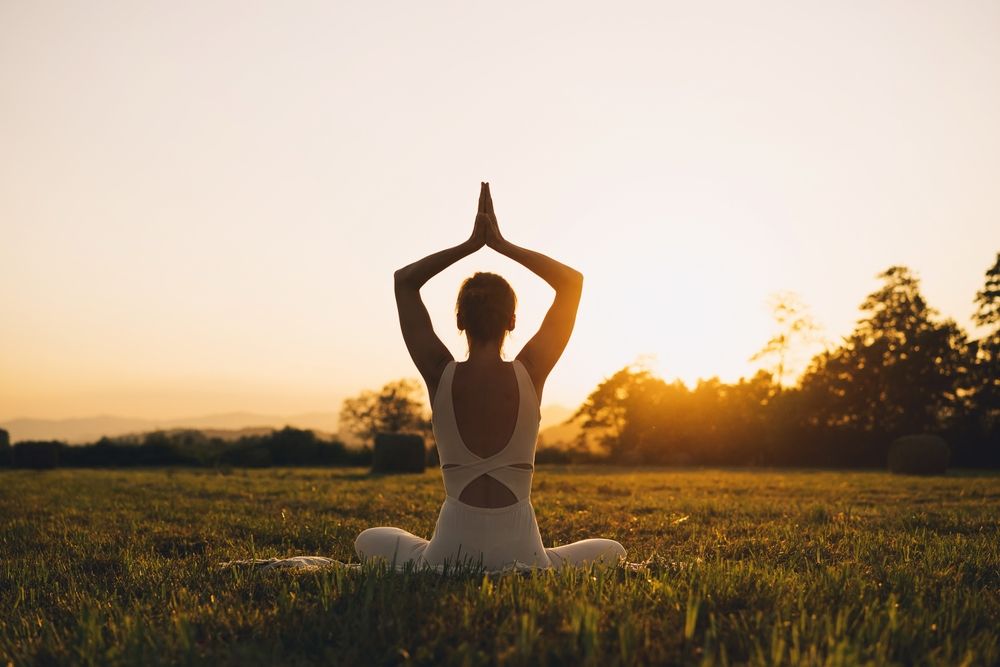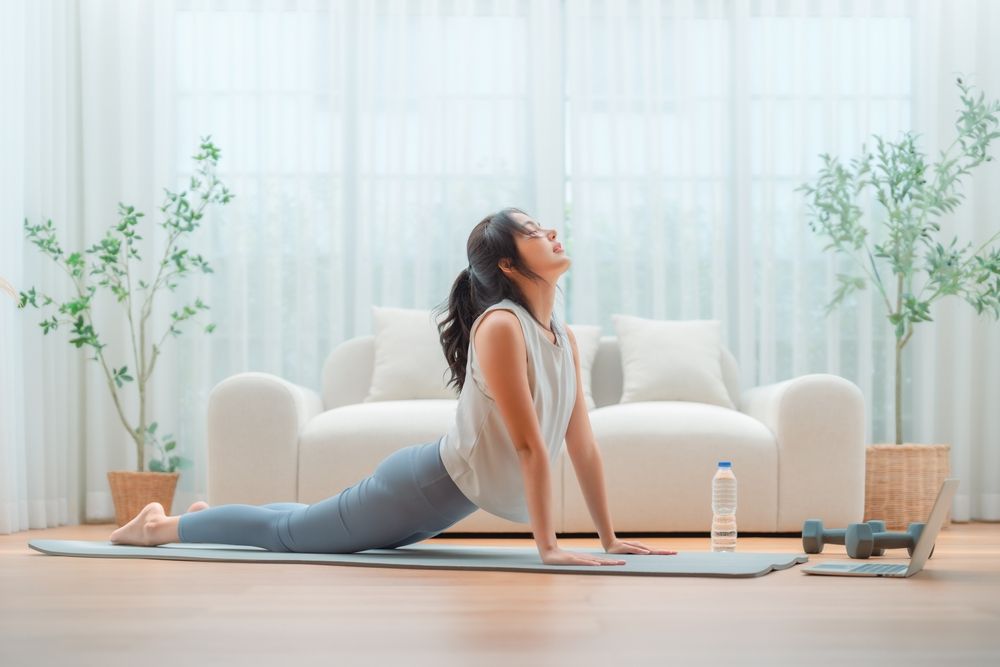
Yoga is a favorite exercise for both the mind and body. If you're looking to enhance a specific area, there are numerous yoga exercises you can incorporate into your routine. Today, we’re sharing an instructor's top yoga exercises for lean arms.
Whether you're dealing with upper arm jiggle or simply aiming to develop lean, defined biceps, yoga can be essential in helping you achieve your goal. "Many yoga poses involve isometric holds, where you maintain a static position under tension for a few breaths. This type of resistance activates muscles while maintaining their length, contributing to tone and definition, especially in the arms. Since many yoga poses require you to support your body weight, you’re effectively using your own weight to load the arms," explains Emily Forte, E-RYT 500 and corporate trainer for YogaSix.
If you want to strengthen, tone, and sculpt your triceps, deltoids, biceps, shoulders, and upper back, these 10 yoga exercises are exactly what your routine needs. You can even combine them to create a "mini vignette" yoga sequence focused on your arms.
Downward-Facing Dog (Adho Mukha Svanasana)

"Downward-facing dog is an excellent pose to begin with for stretching and strengthening your biceps, triceps, deltoids, and shoulders," says Forte.
Start on your hands and knees. Lift your hips toward the ceiling, pressing your shoulders away from your ears and your heels as close to the floor as possible. Keep your palms grounded on the mat, using your energy to press them toward each other. "Imagine creating an upside-down V-shape with your body," Forte instructs.
Hold the downward dog for five to eight breaths.
High Plank or High Pushup (Phalakasana or Dandasana)
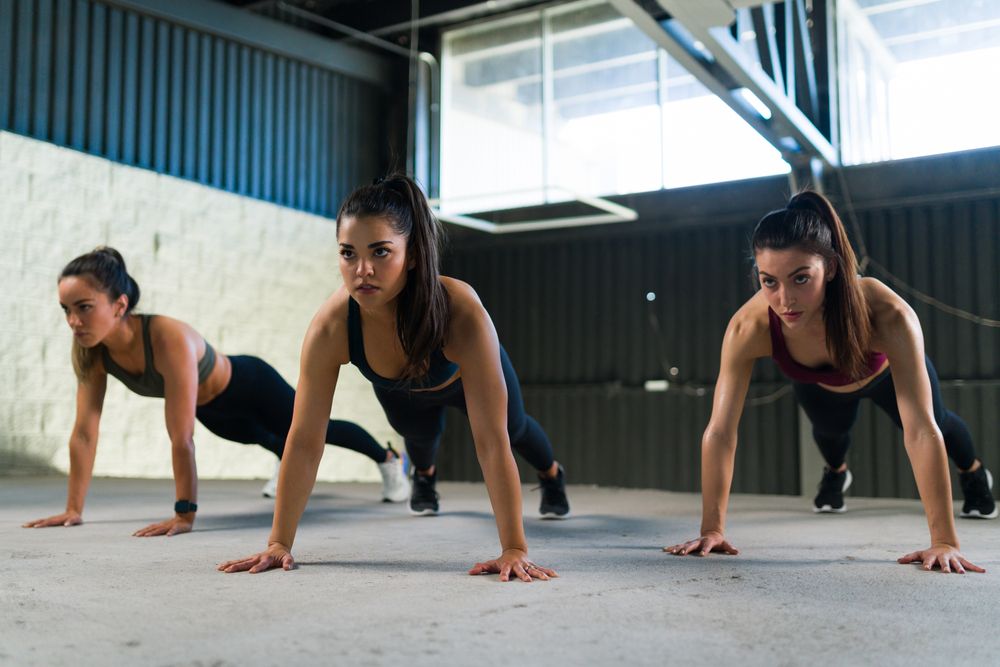
Performing a plank is an excellent total-body workout. "While your legs, core, and back are all working to hold you in position, your arms are also in overdrive! Plank is great for strengthening the biceps, triceps, deltoids, and shoulders," Forte explains.
From a downward dog position, shift your upper body forward so your body forms a straight line. Align your shoulders over your wrists and pull your belly button inward to engage your core and elongate your spine.
Hold this position for three to four breaths.
For a dynamic variation, consider raising your hips toward the sky with each exhale. As you inhale, gradually return to a high plank. Repeat this three to five times.
Yoga Pushup or Low Pushup (Chaturanga Dandasana)

"Similar to a plank, a yoga pushup is a full-body movement that primarily targets the arms and shoulder muscles," Forte explains.
Start in downward dog, then shift your body forward into a high plank position, keeping your core engaged. As you shift your weight forward, bend your elbows and lower your torso toward the ground, hovering just above the mat. Ensure your thighs and core stay activated.
Hold this position for three to four breaths.
For an added challenge, inhale to return to a high plank, exhale to lower into a yoga pushup, and repeat this three to four times. "To exit the pose, straighten your arms and lift back up to plank, then move into downward-facing dog, or transition through cobra or upward-facing dog before returning to downward-facing dog," Forte instructs.
Cobra Pose (Bhujangasana)
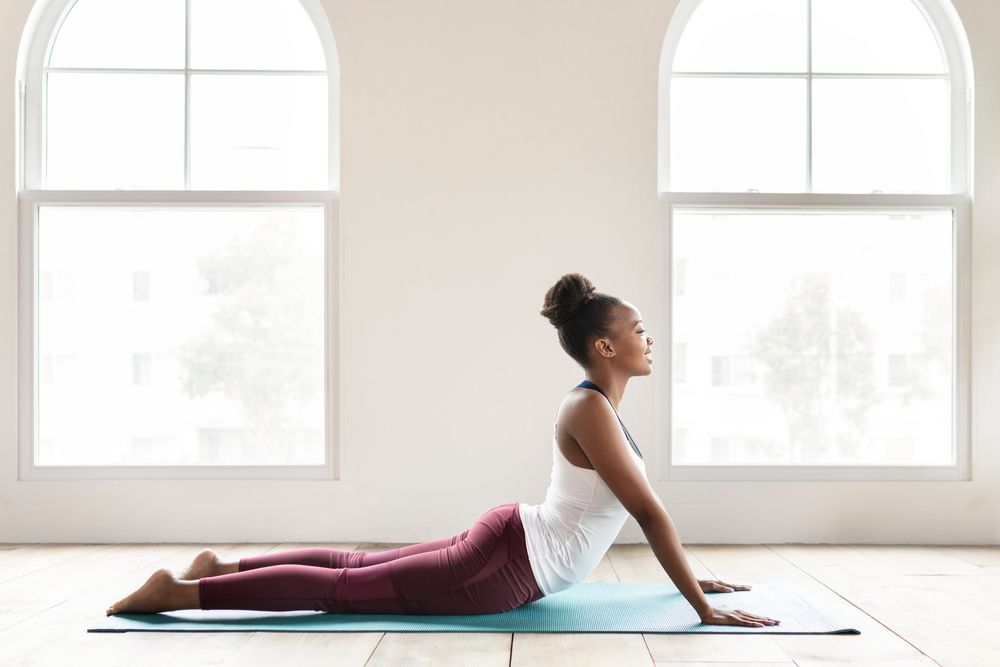
Begin with a yoga pushup. Lower your body to the ground, placing your hands beneath your elbows. Press your palms into the mat as you lift your chest away from it and shift your gaze to the front of your mat. You can either lower back to the ground or lift into upward-facing dog.
Hold this position for three to four breaths.
Side Plank (Vasisthasana)
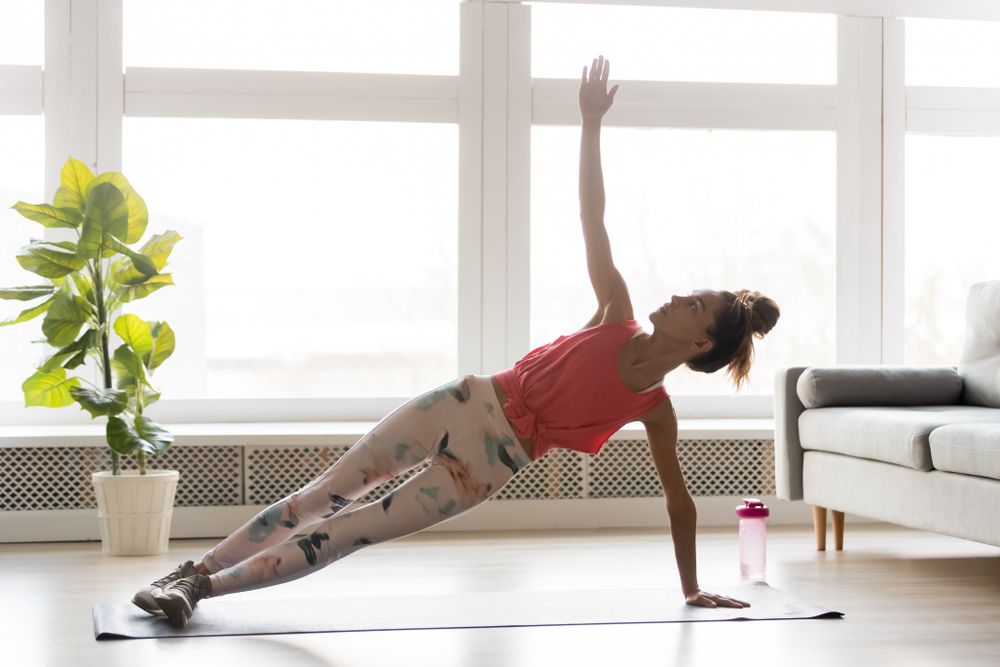
"Just like high plank, side plank requires your arms to hold your body weight, but with only one arm doing all the work," Forte explains.
Start in downward dog, then transition into a high plank with your hands under your shoulders, forming a straight line with your body. Shift your weight to your right side, keeping your right palm grounded, and lift your left arm towards the sky. Use the resistance from your right hand to open your chest.
Hold this position for five to eight breaths.
Forearm Plank or Dolphin Plank (Makara Adho Mukha Svanasana)

Begin in a high plank position. Lower one forearm at a time to the mat, ensuring your elbows are stacked directly below your shoulders. For added support, you can interlace your fingers. Engage your core and lengthen your spine.
Hold this pose for five to eight breaths.
"For an added challenge, plant your right palm, then your left, and lift back up to high plank. Alternate between high plank and dolphin plank five to eight times. To exit the pose, lift to high plank, then lower to the mat for locust pose," Forte instructs.
Locust Pose (Salabhasana)
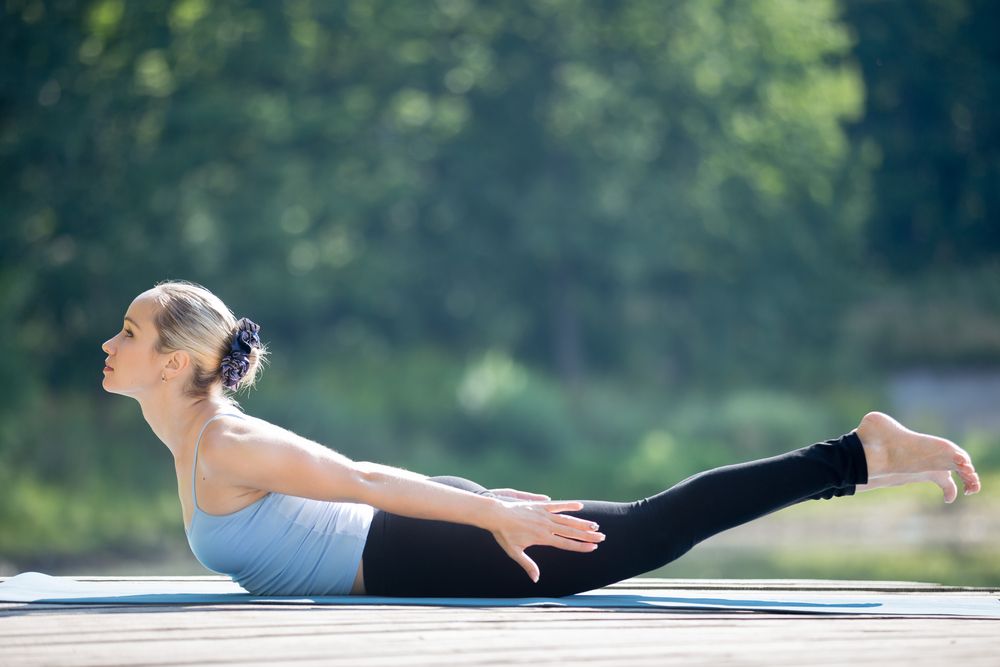
Begin locust pose by lying on your stomach with your arms at your sides. Place your forehead on the floor, and position your feet hip-width apart, grounding evenly through the tops of your feet. As you inhale, lift your chest and forehead off the ground. Hover your legs and hands above the mat, interlacing your fingers over your lower back or tailbone. Shift your body weight to the front of your pelvis.
Hold this position for three to four breaths, gradually working your way up to five to eight breaths.
Reverse Plank (Purvottanasana)
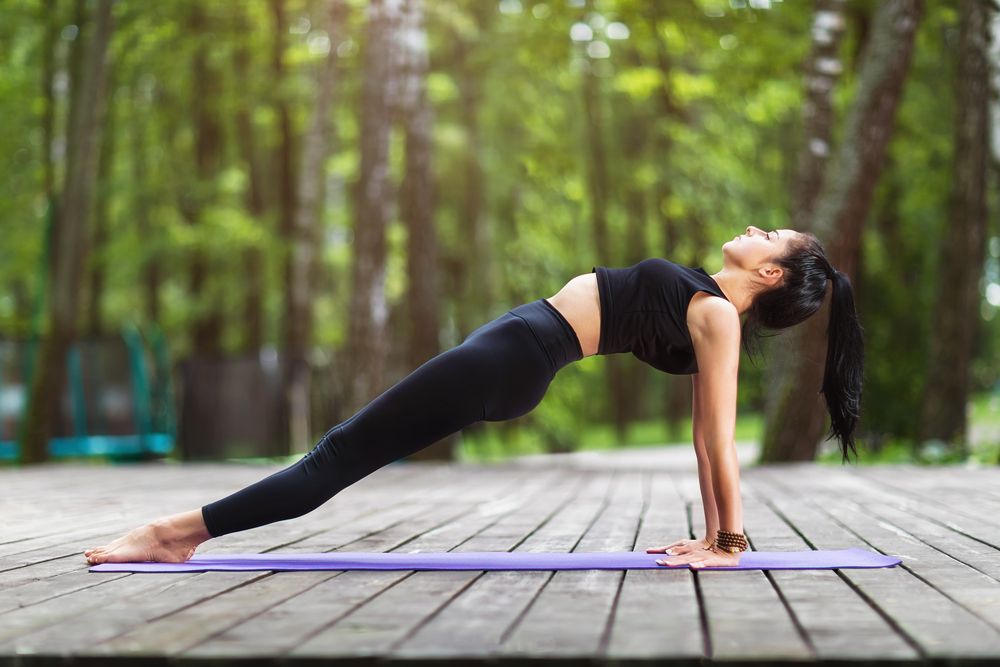
"Reverse plank recruits bicep and tricep strength while strengthening the shoulders," Forte explains.
From locust pose, move into a tabletop position. Then, rotate to a seated position with your legs extended in front of you. Place your hands behind your hips and shoulders, fingers pointing forward. Press through your palms as you lift your pelvis toward the sky, rolling onto the soles of your feet.
"Send your tailbone toward your heels and create a slight arch in your upper back," Forte instructs. "Hug your shoulder blades together, rotate your elbow creases back, and open through your chest."
Hold this pose for five to eight breaths.
Fallen Triangle (Patita Tarasana)
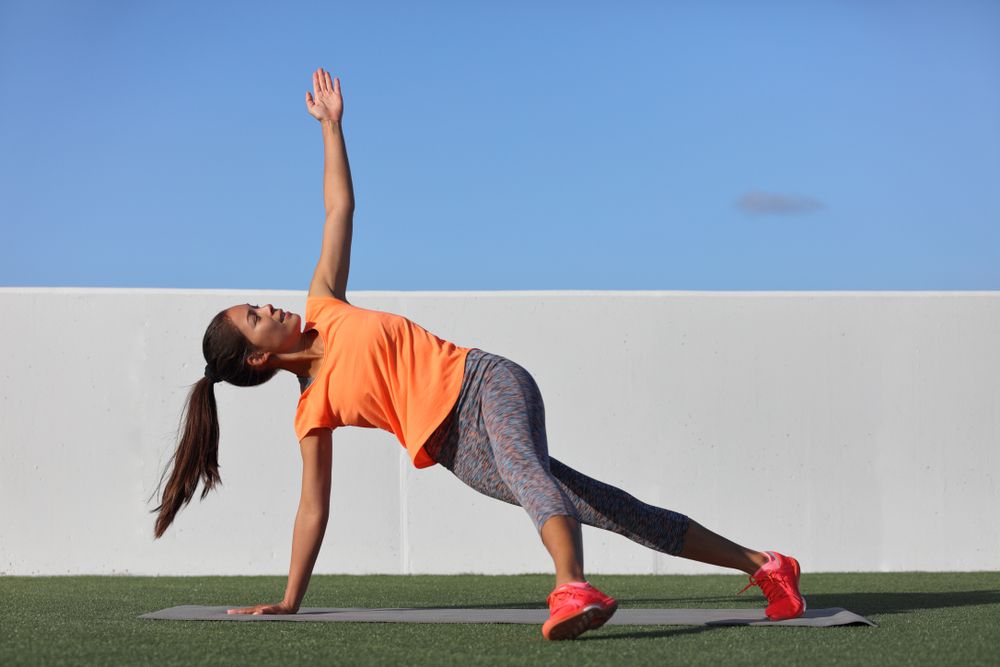
"Fallen triangle is another pose that requires strong engagement of your arms and shoulders to hold the position," Forte explains.
Start in downward dog. Inhale and lift your right leg as high as you can. As you exhale, shift your weight forward into a high plank, bringing your right knee to meet your left elbow or tricep. Place your right foot just beyond your left wrist, keeping your core engaged. Shift your weight into your right hand and lift your left arm toward the sky.
Hold this position for three to five breaths.
Crow (Bakasana)
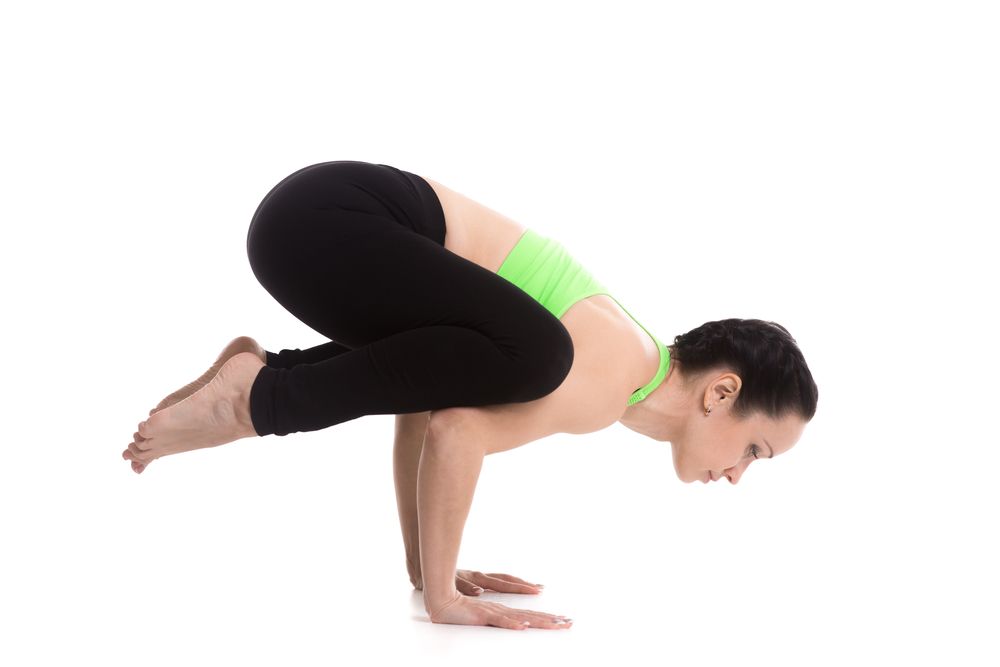
"While crow pose is an arm balance and may take some practice to master, it is excellent for strengthening your arms," Forte explains. "Most arm balance poses require you to support the full weight of your body with your arms, along with the help of your core and other key muscle groups."
From a downward dog position, walk your feet up to your hands. If you're concerned about your face coming into contact with the floor, place a yoga block about a foot in front of you. Position your hands shoulder-width apart on the mat. Bend your elbows and shift as much of your body weight as possible into your hands. Bring your knees just below your armpits and over your elbows.
"Think of your upper arms as a shelf for your knees," Forte instructs. "Begin to lift your feet off the floor, or if this is your first time trying crow, start by lifting one foot at a time until you can lift both simultaneously. Continue to shift forward—this is key! Lower your forehead to the block in front of you, or keep your gaze toward the front of your mat. Squeeze your inner thighs into your arm bones, and lift your hips up while engaging your core."
Work your way up to holding this pose for five to eight breaths.
To exit crow pose, lower your feet back to the mat and step back into a high plank or downward dog position.

